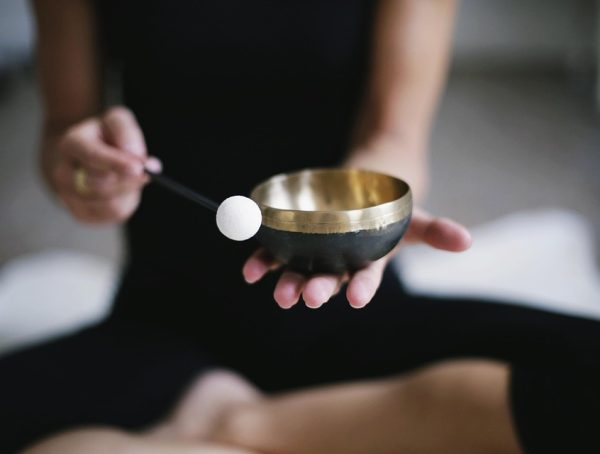Meditation Techniques Every Student Should Know
In today’s fast-paced world, students face increasing pressures from academics, social life, and personal responsibilities. It can often feel overwhelming, leading to stress and anxiety that hinder performance and well-being. Meditation offers a powerful tool that can help students regain focus, calm their minds, and improve overall mental health. Let’s explore some essential meditation techniques that every student should know, accompanied by actionable steps for easy implementation in daily life.
1. Mindfulness Meditation
Mindfulness meditation involves focusing on the present moment and observing thoughts without judgment. This technique can greatly help students manage anxiety and improve concentration.
Action Steps:
- Choose a Comfortable Position: Sit or lie down in a quiet space where you won’t be disturbed.
- Set a Timer: Start with five minutes, gradually increasing as you become more comfortable.
- Focus on Your Breath: Close your eyes and take deep, slow breaths. Notice the sensation of air filling your lungs and the rhythm of your inhalations and exhalations.
- Acknowledge Your Thoughts: When distractions arise, simply acknowledge them without judgment and gently bring your focus back to your breath.
2. Guided Visualization
Guided visualization is a powerful technique where students can imagine a serene place or scenario. This can foster relaxation, creativity, and motivation.
Action Steps:
- Find a Guided Audio: Look for meditation apps or YouTube channels that offer guided visualizations designed for relaxation or study motivation.
- Set the Scene: Close your eyes, breathe deeply, and engage your senses. Imagine what you would see, hear, and feel.
- Visualize Your Success: Picture yourself achieving academic goals, such as completing an important project or acing a test.
- Practice Regularly: Incorporate guided visualization into your routine, especially before exams or presentations.
3. Body Scan Meditation
A body scan involves mentally scanning your body for tension or discomfort, helping to increase body awareness and encourage relaxation.
Action Steps:
- Lie Down Comfortably: Find a quiet space where you can lie flat on your back.
- Breathe Deeply: Inhale deeply and release any tension as you exhale.
- Focus on Body Parts: Begin from your toes, slowly moving up to the crown of your head. Pay attention to how each part feels, releasing any tension you notice.
- Spend Time on Tensed Areas: If you find tension in any area, focus on it, breathe into it, and visualize releasing the stress.
4. Loving-Kindness Meditation (Metta)
This technique focuses on cultivating empathy and compassion towards oneself and others. For students, this can help reduce negative feelings, enhance relationships, and create a positive mindset.
Action Steps:
- Sit Comfortably: Begin in a comfortable seated position.
- Set Your Intention: Start by sending loving-kindness to yourself. Silently repeat phrases like, "May I be happy, may I be healthy, may I be safe, may I live with ease."
- Extend to Others: Gradually extend these wishes to friends, family, classmates, teachers, and even difficult individuals in your life.
- Practice Regularly: Set aside time weekly to practice loving-kindness. Notice how your feelings change towards yourself and those around you.
5. Transcendental Meditation (TM)
TM is a simple technique involving the silent repetition of a mantra. This practice can be beneficial in enhancing focus and reducing stress.
Action Steps:
- Choose Your Mantra: Select a word or phrase that resonates with you, something calming or inspiring.
- Settle In: Find a quiet place, sit comfortably, and close your eyes.
- Repeat Your Mantra: Silently repeat your mantra for about 15-20 minutes, allowing thoughts to come and go without engaging with them.
- Return to Breathing: If you find yourself distracted, gently return to the mantra and your breath.
6. Walking Meditation
Walking meditation combines physical activity with mindfulness, making it an excellent option for students who find stillness challenging.
Action Steps:
- Select a Walking Path: Choose a quiet area where you can walk uninterrupted.
- Focus on Each Step: As you walk, concentrate on the sensations of your feet hitting the ground, the rhythm of your breathing, and the environment around you.
- Engage Your Senses: Notice the sights, sounds, and smells around you, bringing your awareness fully to the present moment.
- Practice for Short Bursts: Even five minutes of mindfulness walking can offer significant benefits.
Building a Consistent Practice
To reap the benefits of these meditation techniques, consistency is key. Students can create a meditation schedule that fits their lifestyle, perhaps starting each day with a short session or incorporating it during study breaks.
Tips for Consistency:
- Set Reminders: Use phone alarms or calendar alerts to remind yourself to meditate throughout the week.
- Join a Group: Consider joining a mindfulness group or class to stay motivated and learn from others.
- Experiment: Trial different techniques to see what resonates most with you, and don’t hesitate to mix them up.
- Track Your Progress: Keep a journal of your meditation experiences, noting feelings, improvements, and insights gained.
Incorporating meditation into your routine can help you navigate the stresses of student life while fostering a positive mindset and improving focus. As you learn to dedicate a few moments each day to mindfulness, you’ll likely find it boosts not only your academic performance but also your overall happiness.
Final Thought
“Your calm mind is the ultimate weapon against your challenges. So, relax and let go.”
For more inspiration and tips on living your best life, follow Kevin on Instagram (@KSteineman) for insights on health, wellness, and motivation!
You might also like
More from Meditation
The Role of Mantras in Transcendental Meditation: A Deep Dive
The Role of Mantras in Transcendental Meditation: A Deep Dive Transcendental Meditation (TM) has garnered a significant following across the globe, …
The Science Behind Meditation: Improving Mental Health Naturally
The Science Behind Meditation: Improving Mental Health Naturally In today's fast-paced world, the pursuit of mental wellness has become paramount. Thousands …
Understanding the 7 Types of Meditation for Beginners
Understanding the 7 Types of Meditation for Beginners: A Path to Inner Peace Meditation has become a popular practice in recent …


































